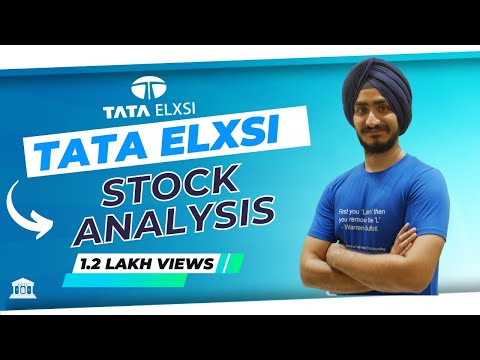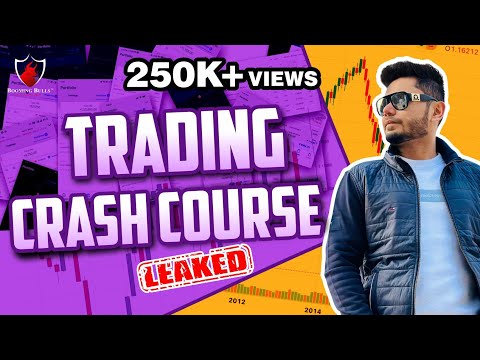Tata Elxsi Business analysis|A Forward Looking IT Business

Hi Investors! Welcome to SOIC. We're going to be analysing our first IT company on our channel. IT: Information Technology Company Before beginning, let's talk about a mental model. Let's discuss how SOIC thinks about Valuations.
We believe that in Valuation the Market Price moves according to the Demand and Supply. The Demand and Supply moves according to how the Discounting Cash Flow machine believes how much cash flow is going come in the Market. We've made 4 Quadrants.
The 1st Quadrant: when the Market is Certain but You are Uncertain whether they'll be Cash Flow or not. These companies are typically out of your circle of competence because you're not able to judge the company's cash flow growth. What we can do here, when we look at the 1st filter is You can either improve your understanding of the company, or you can leave the company alone.
The 2nd filter: when You're Certain but the Market is Uncertain. Mohnish Pabrai says that "Look at opportunities where there is Low Risk but High Uncertainty." This means that there's High Uncertainty about Cash Flow whether there will be Cash Flow or not.
Such companies require your Variant Perception or hidden triggers Some company's Margin is Expanding or another is Deleveraging. There have been several such examples over the years. I think Alkyl Amines was a perfect example in 2019. Laurus Labs in a perfect example for 2021. You'll find several such examples.
The 3rd Filter: when You are Certain and the Market is also Certain that there will be Growth in Cash Flow However, in this case the PE Ration will be very High. This includes consumer companies, companies like Asian Paints where You and the Market are Certain about the Growth in Cash Flow. Let's discuss what the Market's thinks-- what the DCF Mindset is. The Market thinks that if a company like Asian Paints gets a PE Ratio of 100 multiple today, then the Market judges that the industry's Profit Pool is very consolidated. It has been this consolidated for the past 30 years.
Typically in these companies the Foreign Institutional Investors' holdings have been growing over the years. This is because the Cost of Capital in their countries is low. This means their Interest Rate is low, Amazon for example has currently raised money at 0.1%
The Interest Rate is so low there that even 5%, 6% or 7% of Return is acceptable for them. In such companies the typical Variant Perception in comparison to the Market can be that the Earnings Growth is will be strong. Similarly there's a company that's been in our Portfolio for a long time, PI Industries; the PE multiple has expanded a lot and its Earnings Growth has been approx 35%-37% In this case (of PI Industries), even though We are Certain, the Market is Certain about Cash Flow Growth the Earnings Growth can be achieved in the long-term even if the PE Ratio derates The 4th Quadrant/Filter talks about when You are Uncertain and the Market is also Uncertain The companies included here will be typically Cyclical. within Cyclical companies Value Traps exist for a long time because the commodity prices are unknown These days people are taking Cyclical companies a lot. What you have understand here is if you are a Retail Investor and are unable to track Commodity Prices This one of the major sins in the world of Investing, when you invest in a Cyclical company when it is at it's Peak Margin and Peak Valuations and you don't know how to track it. What will happen here is that their Valuation Multiple will derate 3 months before as compared to the Commodity Price Collapse.
As a Retail Investor, you won't be able to judge this. Such situations become similar to riding a tiger. If you want to remove your uncertainty then, you will have to get a deeper understand of each industry. We tried to get a deeper understanding of Gujrat Ambuja Exports Limited. We've mentioned the Twitter Thread of this company's understanding in the description.
Coming back to TATA ELXSI We have divided it's Business Analysis into: Business History, Different Segments, Difference between Tata Elxsi & a Traditional IT company, Valuations, we've also applied our Cash Flow Quadrants here Sources of Risk involving it's Valuations & the Business Model. Let's begin with the Business History. Tata Elxsi was estb. in 1989 It's been an EPD (Embedded Product Design) business since then.
Due to the Global Financial Crisis in the 2000s their EPD business went through a downturn (we'll talk about this later). At that time, Tata Elxsi moved to the VFX (Visual Effects and Design) business. They've worked in some of the Bollywood movies such as Taare Zameen Par, Bhaag Milkha Bhaag, Krrish franchise, as well as Ra-One. In 2010, they also entered the Hollywood scene.
They partnered with a production house where they did an animation project in Las Vegas. Among their animation projects, they worked on a project staring Warren Buffet in a series The problem however, was that they experienced Cost Overrun because the VFX business is a Capital intensive business In 2012-13 they refocused on their EPD business. There are 3 Verticals in their EPD business. The 1st vertical is Automotive this includes transportation (cars), Electric Vehicles-where there's a trend, Railways & Airports The 2nd Vertical is of Media & Broadcasting. In the Broadcasting & Communications vertical, they provide services to the OTT platforms We'll talk about this in detail.
The 3rd Vertical includes Healthcare Services. This is a recent and the most interesting division. We'll discuss why it is so interesting. Let's first discuss the Difference between Tata Elxsi & the traditional IT companies.
A traditional IT company has tremendous fungibility of skills & capabilities. The skills are purely fungible. 1000 Java developers can work on a project.
Tata Elxsi on the other hand requires smaller teams, and require specialisation in a project. Tradition IT: One doesn't really need to have any domain capabilities or skills at the bottom layers. This means that domain capabilities aren't required at the bottom levels of an organisation or team. Tata Elxsi requires domain capabilities in its teams. For e.g., when working on an Autonomous Car Project, one needs to have in-depth knowledge about it.
This requires Domain Capabilities. The 3rd interesting difference in these business models is: Traditional IT companies would interact with the company's Chief Investigation Officer (CIOs) Companies like Tata Elxsi collaborate with the Chief Technology Officers & R&D teams. Traditional IT companies are present in lower growth areas. Tata Elxsi is present in higher growth areas. These are some of the key differences. Another key difference is, which they also mentioned in their con-call.
The sectors they are present in, when compared to the IT companies, their growth is approx. 10% Whereas when we look at Tata Elxsi's presence- Someone has asked about the 30% of growth in the verticals, which they didn't mention So definitely there's more growth in this area than others. Let's discuss the different segments of the business and their market shares. The EPD business (Embedded Product Design) generates around 88%-90% revenues Let's discuss the 1st division:Transport. An interesting trend is underway in the Transportation Segment. It's called CASE.
This means: Connected Cars, Autonomous Cars, Shared Mobility and Electrification of Cars. We'll understand them one by one. Connected Cars: all cars will be connected with each other in the future.
Only if all cars are connected with each other, then they'll become Autonomous. Autonomous means that cars will become driver-less, no one will be driving the cars. Another trend is that soon taxis will be autonomous, there will be no driver you'll be able to book taxis through the mobile apps. Shared mobility means that one car will be shared among people.
The last is Electrification: A lot of electric vehicles are being manufactured and launched. All 4 trends are connected to each other. Another interesting thing to discuss: how many Lines of Code (Software code) are utilised.
Upon a comparison, In a vehicle today, there are 100 million Lines of Code. F-35, a fighter jet has 20-30 million Lines of Code. It is expected that in 2025, a vehicle of tomorrow will have approx. 1 billion Lines of Code. Lines of Code is very complex to understand, it simply indicates the share of software in a car is going to increase. Software is Eating the Car: the share of software in the making of car.
In 2010, the total expenditure of software (% of total value) in making the car was 7%. In 2017, the value of software in cars increased to 10%. In 2030, it is expected that the value of software in cars will increase to 30%. An interesting thing to note: The penetration of Electric Vehicles There's more software share in the making of an electric vehicle than an ICE engine (run by fossil fuels).
We can see the speed of entry of electric vehicles in China, Eu, & the U.S.A. It is expected that passenger vehicles will soon become "software on wheels." Let's look at what services Tata ELxsi is providing. They have a platform called Autonomai. Autonomai is an IP generated platform which is used for Connected and Autonomous cars. Let's look at a case study about Autonomai's usage.
Autonomous vehicles have different levels: L1, L2, L3, L4 & L5. L1-L3 are used more often in the world, because these are being used for tests. L4 & L5 are completely autonomous i.e., self-driven cars (no drivers). Through a short video we can understand Autnomai's usage. Let's consider the Assisted Parking feature. You can use the phone application to park the car by giving it the command.
The car has several sensors to detect objects nearby, here the care stopped because it detected a person behind it. The car parks itself. The Autonomai is an IP led platform. Users get a notification about the car being successfully parked. You can select the option to being the car out of parking, it'll do on its own. This was about their Assisted Parking System.
They collaborated with AEye (iDAR platform) in making RoboTaxi. It was to experiment booking a taxi using a mobile app. Autonomous system till L4 was used. Let's watch a short clip to understand how it works. The Autonomous mode was enable in the taxi.
The Autonomous software will determine the route and manoeuvres, The software will detect any pedestrians and stop the car. Tata Elxsi has been an interesting study so far, from the research I've done. The RoboTaxi can also avoid obstacles. Let's find out what other features the software has. It's self-drive, sensors detect objects and other vehicles and plans the turns.
I think the RoboTaxi collaboration is quite interesting. This was about Tata Elxsi's second collaboration. Tata Elxsi's Customers are interesting companies. Their clients are Tier-1 OEMs (Original Equipment Manufacturer). Their major client is Jaguar (a Tata Motor company). Over the years, there's have been risks involved.
Their client concentration is a lot. They're providing many services to Jaguar. Some of their other clients include: Toyota & Denso. What's interesting to note here is that it's a sticky business. Their revenues in the Transport vertical have been quite chumpy for some time. This means that the Revenues haven't been linear, they have been fluctuating.
This is because the Auto-Industry itself is quite Cyclical. They've also mentioned in their con-calls that in the history of the Auto-Industry, every 15-20 yrs the industry has experienced several booms & busts. A good thing about the Auto companies is, they have a budget of $170-180 billion for R&D. Their R&D is not outsourced as much.
Now that there's pressure on their budgets due to several rules & regulations, the companies have to move towards Electric Vehicles. They have to outsource their R&D. This creates market opportunity of players like Tata Elxsi. Considering their revenue dependence on Jaguar, it has been decreasing over the years. As we can see, in the 1st quarter of 2019 it was INR 98 cr.
In the 4th quarter of FY21, it has decreased to INR 57 cr. Gradually their revenue dependence on Jaguar is reducing. What's interesting with such companies is that the Market at times gives importance to one variable, so they are available at cheaper multiples. This was about Tata Elxsi's Transport vertical within EPD. We'll now discuss their 2nd vertical: Healthcare Healthcare is their most recent vertical & they've been scaling it for the past 4-5 yrs. Their services include Packaging Design, Labelling of medicines (developing software to simplify the complexity in different labels), Product Design for medical devices (we'll look at a case study), they also help in the Regulatory Approvals of the Medical Devices to ensure that all the Medical Devices are developed according to the Regulations.
Let's review a case study. They recently developed a Drug Delivery Pen. The scope of their research was such that since they're a design company, The scope of their work was: Design & Research of the product, Product Design, Design Engineering and make a 3D Prototype. I think this is one of the interesting designs made by them. Considering the Labelling software, there are several types of tables for medicines. They developed a Tele-Medicine app, which is another interesting project.
This was developed for patients to connect with doctors. The features are: Multi-party Video Conference, Wide Labelling Support, Quick Call, Support for Payment Gateway, etc. When we consider their Margins, the Healthcare Vertical will have more Margins. As they've been saying in their con-calls. Their Growth in the Healthcare segment can be observed through their sales in Q1FY19, which were approx. INR 10.5 cr. Fast forwarding to their sales in Q1FY20 were approx. INR 24.5 cr.
In Q1FY21, their sales were close to INR31 cr. In the Q4FY21, their sales reached approx. INR 48 cr. They're in an extremely interesting area. Another interesting case study to know about is the design of a diagnostic platform. They have a client company which operates in the Biotechnology space They helped the company increase their functional productivity. They helped improve the management of the different regulatory bodies & their rules for the pharmaceuticals across the world.
This was another interesting case study. The Healthcare Vertical is extremely interesting because of the different types of products & platforms for drug delivery. The growth is rapidly increasing. A report suggested that the CAGR is at 10%-11% The Healthcare Vertical is indeed interesting. The 3rd Vertical is Media & Communication Their top tier clients are Sky, Comcast, NOS (Portuguese Company), They recently tied-up with Zee Let's understand what they're doing.
Tata Elxsi, in this division, is Google's certified Widevine partner. Widewine is a technology that's used in OTT platforms, -for e.g., Netflix- it helps in the encryption of their videos in terms of privacy Tata Elxsi is a certified Widevine implementor. The growth of OTT industry is approx. at 14% CAGR. All major OTT platforms across the world are using the Widevine technology. Tata Elxsi is thus a certified implementation partner.
Secondly, Tata Elxsi also operates Discover FalconEye-a video test automation platform This software supports several platforms such as X-Box, PlayStation Discover FalconEye helps in the video test automation of the platforms by testing the quality, playback, stability of these videos. Tata Elxsi collaborated with Zee5 in 2018-19 They integrated Zee5's backend videos, developed the multi-lingual front-end user experience, Zee5 is an OTT that offers 12 languages. They also implemented the DRM (Digital Rights Management). Their Revenue Growth from Media & Communications is quite secular. From INR 119 cr. in Q1FY19,
their revenue growth is currently approx. INR 198 cr. Their Revenue in this division has almost doubled. Tata Elxsi is working within an interesting & emerging segment. Let's discuss some comparisons to gain better understanding of Tata Elxsi. We can compare it with a Contract Research Organisation (CRO). If you want to understand what CRO are then do watch our analysis of Syngene.
A CRO helps a company in their drug discovery process. The Pharmaceutical companies outsource their R&D to these companies (CRO). Product manufacturing involves designing, creating prototypes, pre-testing, checking whether the product adheres to the regulatory approvals Only after meetings these requirements does a product get launched. Other than the Manufacturing & Commercial Launch, Tata Elxsi helps in the all the other initial processes. Within a Commercial Launch, Tata Elxsi helps in the Branding Process.
This is where another of there Verticals comes in: Industrial Design This accounts for close to 9% - 10% of their business. In the Industrial Design vertical when we look into which companies they've run design campaigns for or those companies for whom they have designed the packaging. We get to learn a lot of interesting things. They designed the bottle for Horlicks, Sunny Oil, Tata Elxsi has also recently done the entire product design for Orient Coolers Industrial Design is an interesting industry.
However, anyone's serious thesis of investing in Tata ELxsi is for their EPD business. Industrial Design business is decreasing over the years in terms of the Percentage of Margins. We'll discuss Tata Elxsi's Key Financial Metrics, how it is compared throughout the industry, & why they're emerging in this industry? When we consider any IT business' Key Metrics, there are a few things to consider. Knowing the Onsite & Offshore Mix How much revenue is coming from the client (Onsite), & how much revenue is coming from the particular country to India (Offshore) In terms of Offshore, Tata Elxsi's Revenue Mix is approx. 67%
this is why in terms of the Margin Expansion we believe is strong. because in Q4FY20, it came close to 70% This is also an interesting Metric to observe. Secondly, the Revenue by Contract Type Mix: Aim & Material and Fixed Price Generally their Offshore projects are Fixed Price. For the IT companies the Offshore projects have better Margins.
The client concentration, like in the case of Jaguar, in the top ten in Q4FY20 was 51%, which is now in Q4FY21 close to 47% Their Revenue by Geography They're receiving 13% of the Revenue from India For the Americas it is approx. 37% For Europe it is 36% It is interesting to notice that the Revenue is being generated from other countries. I would like to discuss another interesting fact about Tata Elxsi It is important to observe the Attrition Rate in IT companies Attrition is the average of how many employees a company has and how many employees leave the company. Industry wise, Tata Elxsi has the lowest Attrition Rate. It is close to 6% Over the years it is reducing, it was 10% at one point & 11% at another.
It is necessary to look at the Attrition Rate in an EPD company because when you're working on a project, you become well-versed for e.g., if you're working in a Transport vertical you become well-versed in its process It is not easy to replace an employee. That's why it's important to look at the Attrition Rate. I think 6% Attrition Rate is an industry best.
KPIT & LTTS have higher rate of Attrition than Tata Elxsi. LTTS is an EPD company that is very diversified as compared to Tata Elxsi It is also manufacturing its own products, I believe that it's very diversified. KPIT focuses more on Transport Vertical They're also riding the C.A.S.E Trend
However, a lot of Cyclicality has been observed in the company's growth. There are a couple of things related to KPIT which I personally don't like about Annual Reports. So within this vertical, we get left with Tata Elxsi. When we consider Tata Elxsi's Valuations, & all that we discussed in the beginning Interestingly, 2-3 yrs ago, Tata Elxsi would get contracts for the duration of 6-12 months I've spoken to a few people whom I know are working within the IT industry.
All of them said that in this line of business, there usually aren't many long-term contracts. The contracts usually don't last for more than 6-12 months. However in the last year, there's been a drastic shift in the management's comments. The management claims that they're now receiving Multi-Year Contracts (5-10 yrs). This could possibly mean that they're emerging as good partners.
What does it prove, if we look at their no. of employees? In the Q4FY21 there are close to 7,362 employees while in the Q3FY21 there are close to 6,816 employees. They've hired close to 550 employees in a quarter. The hiring process of IT companies usually indicate the expected growth in the future. This I think, is an interesting indication. Tata Elxsi is interesting for another reason: If we remove the Cash Flow Growth & calculate the ROCE, the ROCE is close to 70% - 80% I think it is a Cash Throwing Machine.
Gradually the business is changing The Multi-Year Contracts makes things interesting Let's consider the RISKS in the business. 1st Risk: The biggest risk in the Transportation Segment is that the OEMs are consolidating with each other to conduct the R&D If they consolidate to conduct R&D together then players like Tata Elxsi will experience some pressure in terms of Pricing. 2nd Risk: in terms of Autonomai software- -Google and Baidu (China's Google)- also operate within this software, so there's a lot of competition. 3rd risk: like what happened in 2018-19 in this business I've been reiterating to our students that there are 3 types of P/E 1. Fair Market P/E
If the Market is at the multiple of 20-30 multiples, then the company's P/E multiple should also be the same. 2. Below Fair Value P/E (for a normal business) Tata Elxsi in 2017-19, when Jaguar was experiencing a drastic downturn, the Automotive industry was experiencing a downturn Tata Elxsi's revenues stagnated Their multiple was derated & came to Below Fair Value P/E Now that they're getting Multi-Year Contracts & the IT businesses are operating on Cost Cutting their revenue growth has been fast their EBIT Margin has moved at 30% across the Industry Which no other company in the same industry has achieved at the moment. That's why their P/E Ratio has moved from Below Fair Value to Growth P/E This means that the Market believes there's going to be a lot of growth in the company This in terms of our Cash Flow Quadrants mean that the Market is Certain that there's going to be growth We also believe that there's going to be growth because we've studied the business.
The problem in our Certainty is that there's no longer a Margin of Safety in the Price. Even if there's growth of 20% - 30% in the next 2-3 yrs The problem is that the Multiple has reached 60x - 65x If the Multiple from 60x - 65x derates to 30x If in the next 3 yrs the Earnings double at 25% CAGR As in investor you're not going to generate a lot of Returns The Value today has been seen This concludes our business analysis of Tata Elxsi Do tell us in the comments section how you found this analysis on IT Company You can give us suggestions for the next business analysis. Thank you for joining us. I hope to see you in the next business analysis by SOIC.
2021-05-18 02:30


